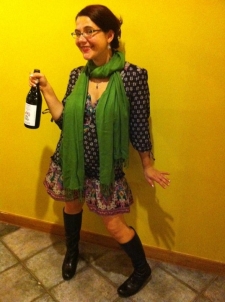As the holidays are approaching, I am going to feature the history of classic spirits to provide a better love and understanding for these products.
I decided what better spirit to start with then the first one I ever enjoyed drinking all by itself: Gin.
Historical Time Line:
- 1550 -16oo-Dutch professor of medicine Dr. Franciscus de la Boë created a juniper and spice-flavored medicinal spirit that he promoted as a diuretic. There are some who claim that
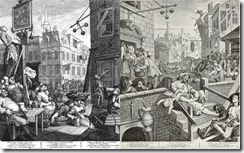 Antoine de Bourbon, Count de Moret of France actually invented gin by blending a grape based distillate with Juniper and calling it Juniper Wine… I will chalk this up to the mysteries of collective consciousness.
Antoine de Bourbon, Count de Moret of France actually invented gin by blending a grape based distillate with Juniper and calling it Juniper Wine… I will chalk this up to the mysteries of collective consciousness. - 1580s-The tasty spirit was found in Holland by British troops who were fighting against the Spanish in the Dutch War of Independence. They gratefully drank it to give them what they soon came to call “Dutch courage” in battle.
- 1600s-The Dutch were encouraged by their government to favor grain spirits over imported wine and brandy by lack of excise taxes on local drinks.
- 1720s-Dutch Protestant William of Orange and his English wife Mary became co-rulers of England after the “Glorious Revolution.” They banned the import of Catholic-made wine, causing about a quarter of the households in London to make their own gin. Mass drunkenness became a serious problem.
- 1736- Gin Act of 1736(Prohibition FAIL #1)- Government tries to prohibit gin production, resulting in massive illicit distilling and the cynical marketing of “medicinal” spirits with fun names such as: Cuckold’s Comfort and My Lady’s Eye Water.
- 1800-1900s- Major government reforms in Europe improve production and materials, and slowly transform gin’s image away from drunk disheveled street urchins swilling rotgut gin, to a spirit of class and culture.
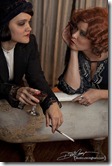
- 1600s-1900s- Gin is a back seat player in the North American spirits game. Paul Revere and George Washington were notably fond of gin, and the Quakers were well-known for their habit of drinking gin toddies after funerals.
- 1920s-(Prohibition FAIL #2)- The US prohibition act gave rise to bathtub gin, jazz, mob-run speakeasies, US cocktail culture, and the swankiest counterculture in US history.
- 1930s-1960s- It was the dominant white spirit in the US, made famous by “three martini lunches.” It was the image of class, and success.
- 1970-1980s- Was unseated in the US by vodka & wine, ironically by another counterculture movement who deemed gin a symbol of “the Man.” It was even betrayed by James Bond, who ordered a vodka martini instead of a gin martini… Shame on you Mr. Bond!
- 1990s-As the US economy got bigger and better, so did its thirst for gin. The power martini was back in fashion.
- 2000-2012- The rise of mixology and micro-distilleries. This is the time of making cocktails & spirit production an art, sometimes in new and inventive ways and sometimes by perfecting and refining old traditions. Either way it is a very exciting time to be a gin drinker.
What’s In A Name?:
The name gin is an English shortening of Genever, the Dutch word for juniper.
Development of Style:
Victorian era England in the mid-19th century ushered in a low-key rehabilitation of gin’s reputation. The harsh, sweetened “Old Tom” styles of gin of the early 1700s slowly gave way to a new cleaner style called Dry Gin.
This style of gin became identified with the city of London to the extent that the term “London Dry” Gin became a generic term for the style, regardless of where it was actually produced.
Ladies who lunch sipped sloe gin (gin flavored with sloe berries) while reading Bronte. Incidentally, I desperately want to taste a sloe berry!
There are three commonly recognized distillation styles for gin:
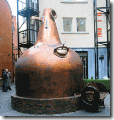 Pot distilled gin- It represents the earliest style of gin, and is traditionally produced by pot distilling a fermented grain mash (malt wine) from barley and or other grains, then redistilling it with flavoring botanicals to extract the aromatic compounds. A double gin can be produced by redistilling the first gin again with more botanicals. Due to the use of pot stills, the alcohol content of the distillate is relatively low; around 68% ABV for a single distilled gin or 76% ABV for a double gin. This type of gin is often aged in tanks or wooden casks, and retains a heavier, malty flavor that is appealing to whiskey lovers. This method is loved by many artisans and purists.
Pot distilled gin- It represents the earliest style of gin, and is traditionally produced by pot distilling a fermented grain mash (malt wine) from barley and or other grains, then redistilling it with flavoring botanicals to extract the aromatic compounds. A double gin can be produced by redistilling the first gin again with more botanicals. Due to the use of pot stills, the alcohol content of the distillate is relatively low; around 68% ABV for a single distilled gin or 76% ABV for a double gin. This type of gin is often aged in tanks or wooden casks, and retains a heavier, malty flavor that is appealing to whiskey lovers. This method is loved by many artisans and purists.- Column distilled gin-This method came after the invention of the coffee still and is produced by first distilling high proof (e.g. 96% ABV) neutral spirit from a fermented mash or wash using a refluxing still. The fermentable base for this spirit may be derived from grain, sugar beets, grapes, potatoes, sugar cane, plain sugar, or any other material of agricultural origin. The highly concentrated spirit is then redistilled with juniper berries and other botanicals in a pot still. Most often, the botanicals are suspended in a
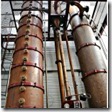 ‘gin basket’ positioned within the head of the still, which allows the hot alcoholic vapors to extract flavorings components from the botanicals. This method yields a gin lighter in flavor than the older pot still method, and results in either a distilled gin or London dry gin, depending largely upon how the spirit is finished. This is how many of the larger gin houses produce their product.
‘gin basket’ positioned within the head of the still, which allows the hot alcoholic vapors to extract flavorings components from the botanicals. This method yields a gin lighter in flavor than the older pot still method, and results in either a distilled gin or London dry gin, depending largely upon how the spirit is finished. This is how many of the larger gin houses produce their product. - Compound gin- is made by simply flavoring neutral spirits with essences and/or other ‘natural flavorings’ without distillation, and is not as highly regarded as distilled gin.
There are four labeling distinctions: (With an endless number of smaller distinctions)
- Juniper-Flavored Spirit Drinks – This includes the earliest class of gin, which is produced by pot distilling a fermented grain mash to moderate strength (e.g. 68% ABV), and then redistilling it with botanicals to extract the aromatic compounds. It must be bottled at a minimum of 30% ABV. Juniper-Flavored Spirit Drinks may also be sold under the names Wacholder or Genebra.
- Gin – This is a juniper flavored spirit made by simply adding approved natural flavoring substances to a neutral spirit of agricultural origin. The predominant flavor must be juniper.
- Distilled gin – Distilled gin is produced exclusively by redistilling ethyl alcohol of agricultural origin with an initial strength of 96% ABV in stills traditionally used for gin, in the presence of juniper berries and of other natural botanicals, provided that the juniper taste is predominant. Gin obtained simply by adding essences or flavorings to ethyl alcohol of agricultural origin is not distilled gin. It is the most common way.
- London gin – London gin is obtained exclusively from ethyl alcohol of agricultural origin with a maximum methanol content of 5 grams per hectoliter of 100% ABV equivalent, whose flavor is introduced exclusively through the re-distillation in traditional stills of ethyl alcohol in the presence of all the natural plant materials used, the resultant distillate of which is at least 70% ABV. London gin may not contain added sweetening exceeding 0.1 gram of sugars per liters of the final product, nor colorants, nor any added ingredients other than water. The term London gin may be supplemented by the term “dry”. It is the traditionalist method.
Cocktail Culture:
Cocktails seem to have been birthed out of the British military, particularly the officer corps. Hundreds of gin-based mixed drinks were invented and the mastery of their making was considered part of a young officer’s training (If this was still a thing I might have enlisted.) The best known of these cocktails, the Gin & Tonic, was created as a way for Englishmen in tropical colonies to take their daily dose of quinine, to ward off malaria. Modern tonic water still contains quinine, though as a flavoring rather than a medicine. As we have already discussed, the US gin cocktail culture was at its peek from the 1920s-1960s, with a mini pop in the 90s, and a boom now.
There are a million gin cocktail recipes to be found, and a million more being invented by mixologists every day. Below are a few classics you may want to experiment with:
- Fallen Angel
- Gibson
- Gimlet
- Gin and Tonic
- Gin Fizz
- Gin Rickey
- Moon River
- Martini
- Negroni
- Old Etonian
- Pink Gin
- Ramos Gin Fizz
- Satan’s Whiskers
- Singapore Sling
- The Last Word
- Tom Collins
- Vesper
- White Lady
Stay Tuned:
Throughout the year I will be posting shows on how to make seasonal cocktails, highlighting some of my favorite producers. This month I will be featuring Martin Miller’s Gin, with some fun holiday cocktails. I will try to resist growing a fancy mixologist handlebar mustache, but I can’t promise anything. After all, it is Mo-vember.

